Strengthening the Philippine Food Safety Regulatory System
A look at how the FDA-CFRR upholds the country’s Food Safety Act of 2013
The Republic Act (RA) No. 10611, also known as the Food Safety Act of 2013, is an act to strengthen the food safety regulatory system in the country to protect the consumer health and facilitate market access to local foods and food products. This includes the combination of regulation, food safety standards, inspection, testing, data collection, monitoring, and other activities carried out by Food Safety Regulatory Agencies (FSRAs) and the Local Government Units (LGUs).
The Food and Drug Administration – Center for Food Regulation and Research (FDA-CFRR) is one of the designated FSRAs spearheading the regulation, evaluation, and implementation of the country’s food safety control management systems for processed food products. Food Safety Trends Philippines Magazine consulted FDA-CFRR Food Safety Unit’s Officer-in-Charge, Timothy Mendoza, to gain insight on their commitment towards maintaining processed food products’ quality and safety for consumers. This includes their significant role in leading the implementation of the Food Safety Act of 2013 within the FDA.
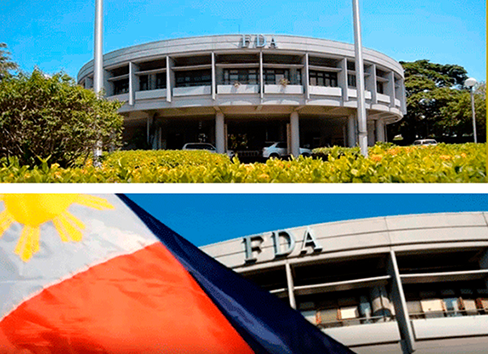
1. Indicated under the Food Safety Act of the Philippines as one of the designated FSRAs, what are the specific roles, responsibilities and programs of the FDA-CFRR?
The FDA-CFRR has been institutionalized through Republic Act No. 9711 or the “Food and Drug Administration Act of 2009”. Anchored on the Implementing Rules and Regulations (IRR) of RA 9711, the Center for Food Regulation has the following powers and functions on processed food products:
- Regulation of manufacturing, importation, exportation, distribution, sale, offering for sale, transferring, promotion, advertising, sponsorships;
- Conduct of research and institution of standards on the safety and quality;
- Operation of respective Center’s testing and/or calibration laboratories;
- Inspection, evaluation, and issuance of appropriate licenses or authorizations to food establishments and/or processed food products;
- Conduct of audits to regional field offices in coordination with the Field Regulatory Operations Office; and
- Conduct of post-marketing surveillance for processed food products.
These were further strengthened by Republic Act no. 10611 or the “Food Safety Act of 2013” through the addition of the following mandate on implementing a performance-based food safety control management system:
- Enforcement of Hazard Analysis Critical Control Points (HACCP) and other risk-based control measures;
- Strong participation in Codex and other international standard setting bodies;
- Communication of risks and development of interactive exchange among stakeholders; and
- Development of a database of food safety hazard and food-borne illness from epidemiologic data
Further, through the resolutions of the Food Safety Regulation Coordinating Board (FSRCB), the highest entity overseeing and coordination food safety policies in the country, the FDA-CFRR has been vested with additional powers and functions, to wit:
- National Contact Point of the Philippine Rapid Alert System for Food and Feed (Phil RASFF);
- Focal Point to the World Health Organization International Food Safety Authorities Network, ASEAN Rapid Alert System for Food and Feed (ASEAN RASFF), European Rapid Alert System for Food and Feed (EU RASFF); and
- Administrative and Technical Secretariat to the FSRCB
Due to the additional functions vested by the Food Safety Act of 2013, the FDA-CFRR has created the Food Safety Unit (FSU), the interim Food Safety and Quality Division per Rule 18g.1 of the IRR, which started with three (3) technical personnel in 2015 and was gradually increased to nine (9) technical personnel and one (1) IT personnel. The FSU serves as the focal administrative unit within the FDA in terms of FSA implementation, overseeing, and coordination of post-marketing surveillance activities on processed food products.
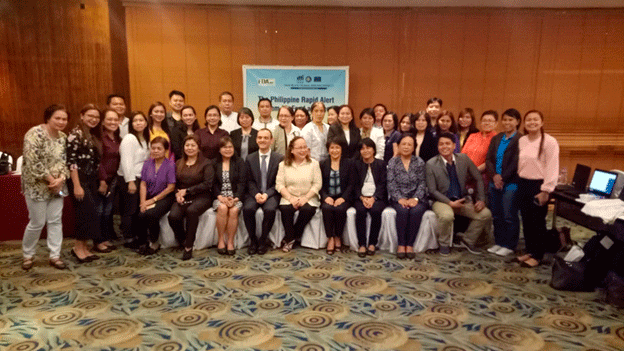
2. What are the processes strictly done and monitored by the FDA-CFRR with regard to food safety?
The FDA has divided the regulatory actions conducted into Pre-Marketing Regulatory Activities and Post-Marketing Regulatory Activities.
The Pre-Marketing Regulatory Activities covers the issuance of relevant authorizations such as License-to-Operate for processed food establishments, Certificates of Product Registration for respective processed food products, Advertisement and Promotional Permit, Export Commodity Clearance, among others. These premarketing authorizations are mandated to be secured prior to conducting the corresponding market activity by all food establishments. Prior to the release of aforementioned authorizations, inspection activities, laboratory analysis, evaluation of compliance to product standards and/or regulations are conducted.
The Post-Marketing Regulatory Activities conducted by FDA are technically and legally specified as Post-Marketing Surveillance (PMS) activities per Republic Act No. 9711. PMS activities are based and arise from laboratory analyses data and Pre-Market data.
Regulatory or administrative actions employed by the FDA for the processed sector includes Public Health Advisories, FDA Orders for Confiscation and Seizure of verified non-registered processed food products, Product recalls (voluntary or FDA-ordered), Legal Cases, and other communication activities to verify compliance.
All of these activities are enforced through the cooperation and collaboration of the CFRR, Field Regulatory Operations Office, Common Services Laboratory, and the Legal Services Support Center of the FDA.
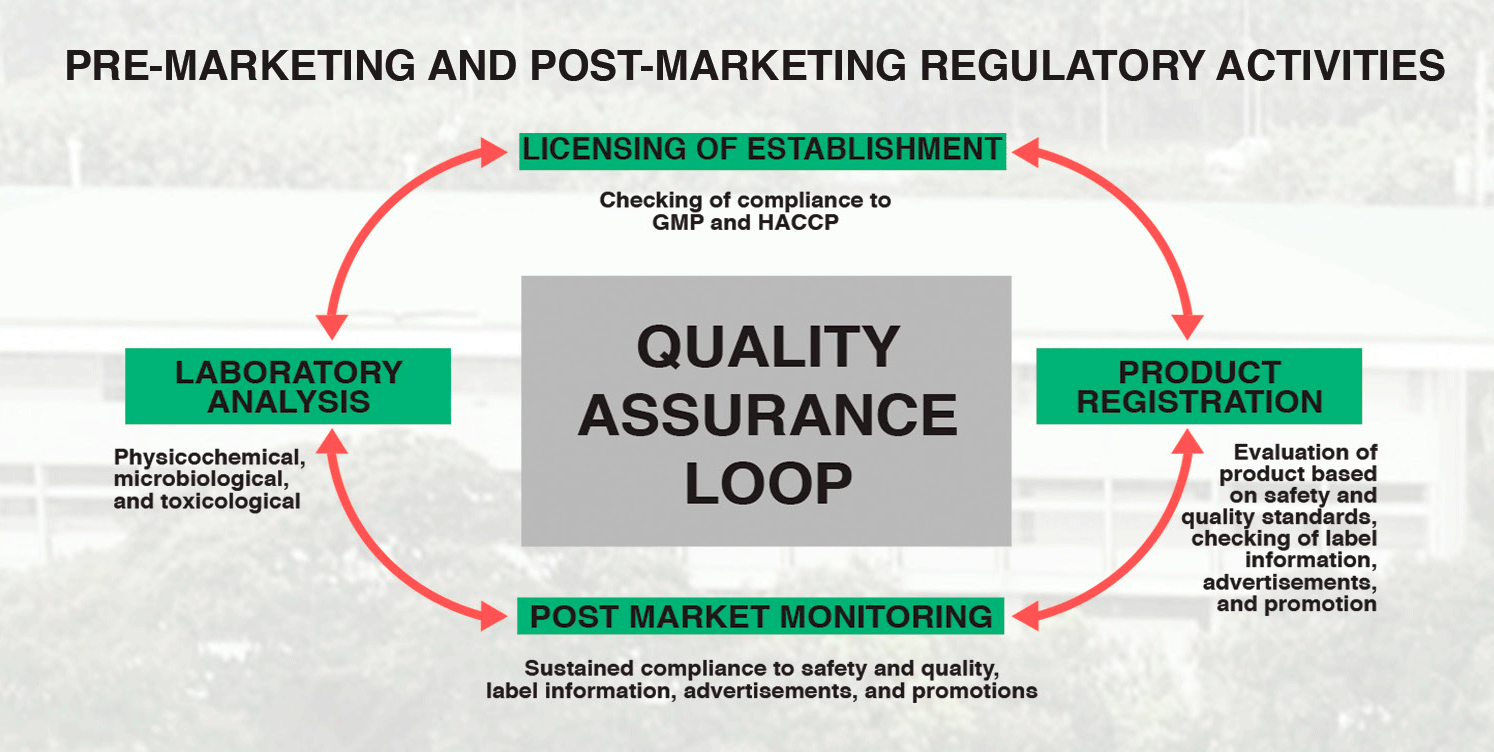
3. What are the updates on the implementation of the Food Safety Act of 2013? What projects or activities has the FDA initiated in ensuring food safety in the country?
Currently, the FDA-CFRR leads the implementation of the Food Safety Act of 2013 within FDA through the following activities:
- Organizing and convening of the FSRCB, the highest entity coordinating and overseeing Food Safety and Quality regulations and policies. As the administrative and technical secretariat to the Board, CFRR-Food Safety Unit has paved the way for the convening of eight (8) FSRCB meetings with the most recent one convened in March 2021. For the year 2021, the FSRCB has started re-organizing into committees to improve efficiency and effectiveness in deciding on polices of national interest;
- FDA-CFRR, through the leadership of the FDA Director General, is the National Contact Point to the Phil RASFF, World Health Organization International Food Safety Authorities Network (INFOSAN), ASEAN RASFF, and the EU RASFF. CFRR through the Food Safety Unit, the interim Food Safety and Quality Division, coordinates international and national notifications related to food safety, ensuring that respective FSRAs from the Department of Health (DOH) and Department of Agriculture (DA) conducts appropriate regulatory actions to protect the health of the domestic and foreign consumers;
- On-going review and consultation on the drafted Philippine Food Safety Emergency and Crisis Management Plan to ensure that food safety incidents, emergencies and crises are averted, mitigated, and prevented in the future through efficient and effective delineation of responsibilities and functions, clarity and coherence of actions among FRSAs; and
- Bilateral and multi-agency coordination and collaboration activities with the DA, Department of Science and Technology, and Department of Trade and Industry in areas of enforcement, monitoring and surveillance, research and development, policy formulation, and handling of consumer complaints.
Within the agency, FDA-CFRR is embarking on improving its post-marketing surveillance through electronization and digitalization of its internal processes to ensure that service delivery is unhampered, transparent and reliable even in a crisis, such as this COVID-19 pandemic. Further, the FDA has partnered with multiple international organizations to further strengthen the technical capabilities of all FDA officers from the laboratory, inspectorate, licensing, registration and PMS sector of FDA.
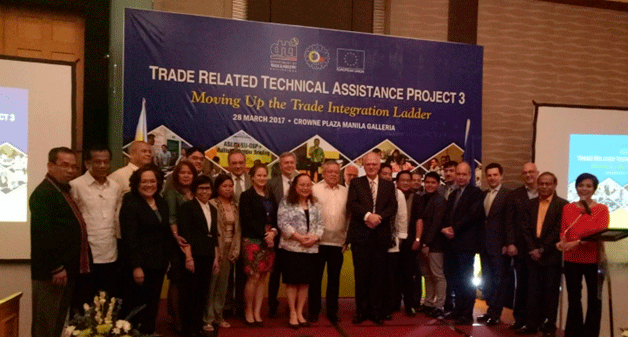
And lastly, for Food Safety Awareness Week that was held last October 2021, FDA prepared relevant information and education materials with the goal of improving our agency’s social media presence to disseminate food safety information on processed food products to a wider group of our demographics.
4. One of the initiated plans of the FDA is the launch of Phil RASFF, how does the system work and what are the updates on this project?
Phil RASFF was born out of the necessity to rapidly disseminate and coordinate food and feed safety information to relevant government officers to ensure that the safety of the consuming public is protected and preserved. Currently, the Phil RASFF network is comprised of the following:
- National Contact Point: Philippine FDA
- Department Contact Points: DA and DOH
- Agency Contact Points: DA-Bureau of Animal Industry, Bureau of Plant Industry, Bureau of Fisheries and Aquatic Resources, National Meat Inspections Service, National Dairy Authority, Sugar Regulatory Administration, Philippine Coconut Authority, Fertilizer and Pesticide Authority, DOH-Food and Drug Administration, Bureau of Quarantine, Epidemiology Bureau
- Support Agency Contact Points
The different contact points rapidly communicate to respective FSRAs through the online portal of Phil RASFF, e-mails, cross platform instant messaging softwares, and other communication means once relevant food safety information are gathered or received domestically or internationally from internal regulatory activities or stake holder vigilance and reporting.
The establishment of the Phil RASFF is a landmark endeavor as it ensures the organization and collaboration of all FSRAs into the goal of protecting public health by ensuring unsafe food is rapidly controlled and removed from the market. This prompted the upgrading and improving the means of communication of agencies as well as indirectly spurring the strengthening of internal policies and capacities to cope up with the fast-paced demand of dissemination of relevant food and feed safety information.
As with all system, the initial reception and adoption are the main challenges. These are still being addressed to date through constant communication with Phil RASFF Contact Points and through the formulation of future collaborative activities.
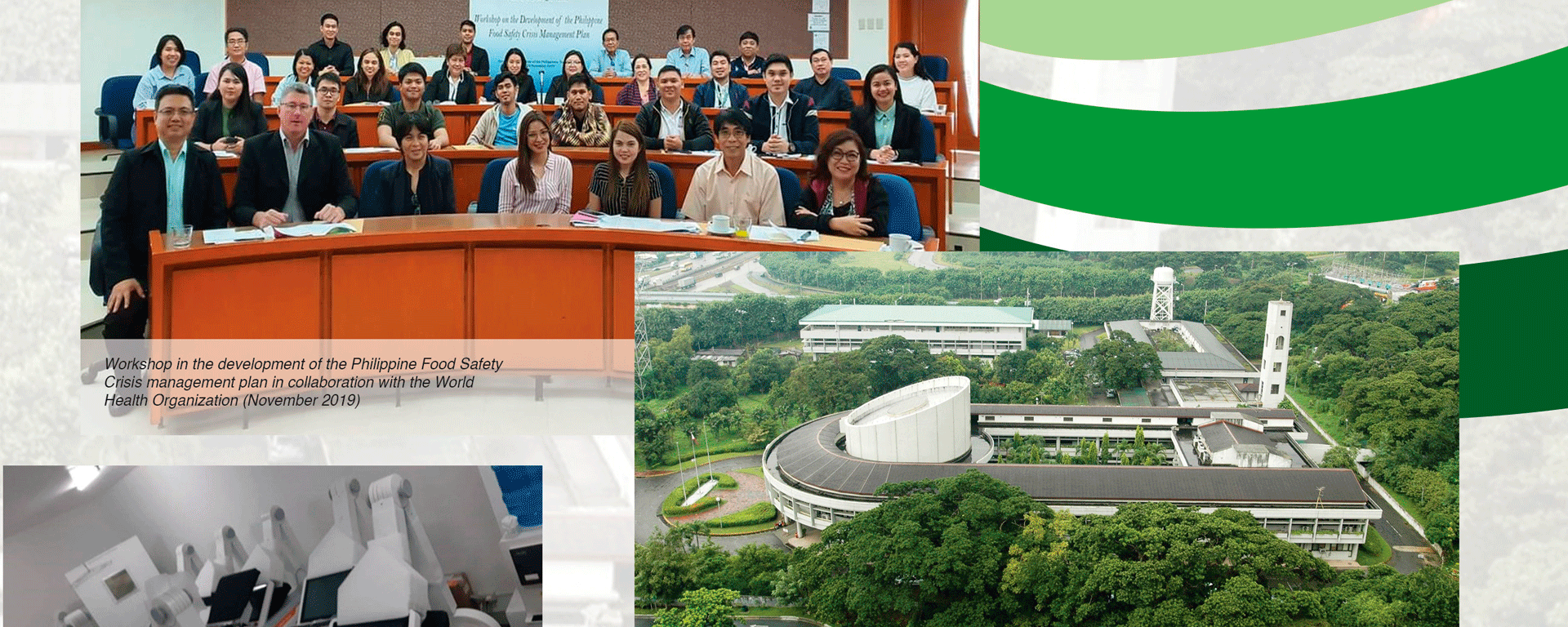
5. What are the most common food safety concerns reported to the FDA and what institutions are most susceptible to these? How are these cases handled?
From 2019 until the third quarter of 2021, the FDA-CFRR has handled 835 reports with majority from consumer complaints arising from product defects (e.g. presence of physical contaminant, sub-par physical appearance, etc.), followed by reports on potentially violative processed food products, and lastly by foodborne disease outbreaks as coordinated by the DOH – Epidemiology Bureau, Epidemiological and Surveillance Units (i.e. Regional, Provincial, City/Municipal).
All cases are handled without undue delay. The factors being checked when handling reports are the following:
- Status of authorizations (e.g. License-to-Operate, Certificate of Product Registration, Advertisement and Promotions Permit, Export Certificates);
- Risks involved;
- Severity and magnitude of exposure to risks; and
- Non-conformities to standards and regulations.
After evaluating gathered data and evidence, appropriate regulatory action shall be instigated, such as but not limited to sampling, monitoring, laboratory testing, inspection, and/or root cause analysis.
6. In the implementation of the Food Safety Act, what are the challenges you have encountered or are currently encountering? How are these addressed?
Republic Act No. 10611 has a broad scope and application to be implemented by various stakeholders such as the Food Business Operators, National Government Agencies and the Local Government Units of which cross-sectional areas ranging from polices, operational arrangements, enforcement, jurisdictional issues, training and capacitation, and consumer education are highlighted. Due to the magnitude of the areas mandated to be implemented and addressed, the National Government Agencies conduct the following:
- Convening of FSRCB meetings to discuss food safety areas of national interest to be discussed and prioritized;
- Consistent advocacy and promotion of food safety programs to key government officials, industries and consumers; and
- Constant communication among FSRAs and other relevant stakeholders to ensure that relevant stakeholders to ensure that relevant and timely food safety information are disseminated.
7. What are the plans and programs underway of the Philippine FDA for a stronger food safety culture in the Philippines?
Improvement of the food safety culture in the Philippines does not happen overnight. The Food and Drug Administration Philippines is now targeting the current generations of Filipinos to be empowered in the area of food safety through provision of information, education, and communication materials that can be accessed and shared through social media. In this line, all Public Health Advisories issued, aside from the posting in the official FDA website, are accessible via the Facebook page of the FDA to maximize the engagement of Filipinos with topics regarding food safety.
Institutional policies are also discussed to ensure that food safety education is ingrained in the culture of the Filipinos through the celebration of World Food Safety Day every June 7 and the Food Safety Awareness Week every last week of October. The ultimate goal is to include it in our educational curriculum in the public and private sector to be assured that food safety values and ideals will be cultivated and ingrained in the minds of the new generation of Filipinos.

For interested subscribers or advertisers of Food Safety Trends Philippines Magazine, click here or send us an email at [email protected].


